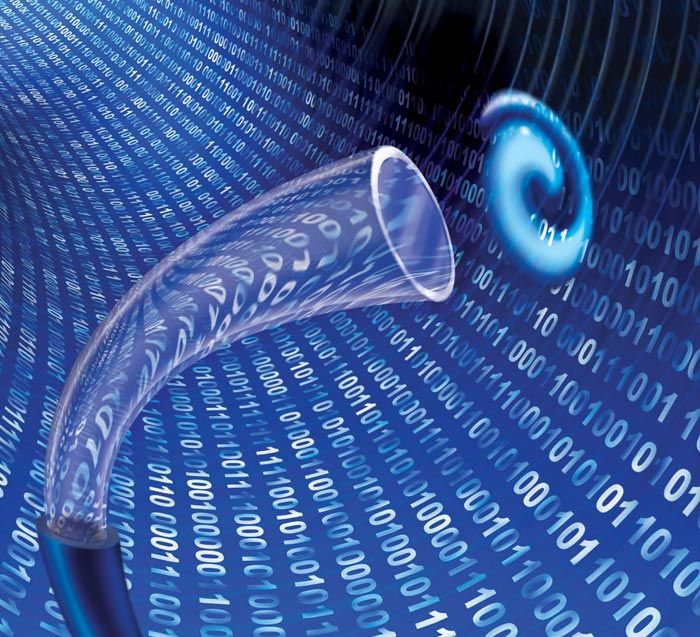Special relativity prevents any object with mass travelling at the speed of light, and the principle of causality – the notion that the cause comes before the effect – is used to rule out the possibility of superluminal (faster-than-light) travel by light itself. However, a pulse of light can have more than one speed because it is made up of light of different wavelengths. The individual waves travel at their own phase velocity, while the pulse itself travels with the group velocity. In a vacuum all the phase velocities and the group velocity are the same. In a dispersive medium, however, they are different because the refractive index is a function of wavelength, which means that the different wavelengths travel at different speeds. Wang and colleagues report evidence for a negative group velocity of −310 c, where c (=300 million metres per second) is the speed of light in vacuum.
Their experimental set-up is remarkably similar to that used to slow light to a speed of just 17 metres per second last year. It relies on using two lasers and a magnetic field to prepare a gas of caesium atoms in an excited state. This state exhibits strong amplification or gain at two wavelengths, and highly anomalous dispersion – that is, the refractive index changes rapidly with wavelength – in the region between these two peaks.
Wang and colleagues begin by using a third continuous-wave laser to confirm that there are two peaks in the gain spectrum and that the refractive index does indeed change rapidly with wavelength in between. Next they send a 3.7-microsecond long laser pulse into the caesium cell, which is 6 centimetres long, and show that, at the correct wavelength, it emerges from the cell 62 nanoseconds sooner than would be expected if it had travelled at the speed of light. 62 nanoseconds might not sound like much, but since it should only take 0.2 nanoseconds for the pulse to pass through the cell, this means that the pulse has been travelling at 310 times the speed of light. Moreover, unlike previous superluminal experiments, the input and output pulse shapes are essentially the same.
